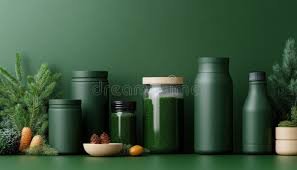Blog
Beauty Packaging’s Green Revolution: What’s Next?

Walk into any beauty store and you’ll notice something shifting. Sleek containers are making way for refillable alternatives, and the industry that once prioritised glossy presentation above all else is now grappling with a fundamental question: how do we make beauty sustainable without losing its allure?
The beauty packaging landscape is transforming faster than a ten-step skincare routine. Consumers are demanding transparency, sustainability, and innovation—all wrapped up in packaging that still feels special. From glass packaging making a premium comeback to biodegradable innovations that dissolve harmlessly, the future of cosmetic packaging looks radically different from what we’ve known.
This isn’t just about swapping one material for another. We’re witnessing a complete reimagining of how beauty products reach our bathroom shelves, driven by environmental consciousness, regulatory pressure, and a generation that refuses to choose between effective skincare and a healthier planet.
The Material Revolution
The move towards more considered packaging is undeniable. Glass packaging is experiencing a renaissance, particularly in the premium skincare and fragrance sectors. Brands are rediscovering what luxury perfume houses never forgot—glass conveys quality, preserves the product inside, and can be endlessly recycled.
But glass isn’t the only player. Aluminium containers are gaining traction for their lightweight properties and infinite recyclability. This makes them particularly appealing for travel-sized products and refillable systems. Perhaps most intriguingly, biodegradable materials are moving from experimental to mainstream.
Refillable Systems: The New Status Symbol
Refillable packaging is evolving from an eco-friendly novelty to a sophisticated system that luxury brands are embracing. The concept isn’t new—high-end perfumes have offered refillable options for decades—but its application across skincare and fragrance is expanding rapidly.
Modern refillable systems are designed for convenience, with magnetic closures and innovative dispensing mechanisms that make the process clean and satisfying. While the initial investment in a refillable bottle might be higher, the ongoing cost of refills is typically lower than buying a whole new product. For consumers balancing cost-of-living pressures with environmental concerns, this represents genuine value. Brands are also leveraging these systems to strengthen customer loyalty through subscription services and in-store refill stations.
New Rules are Reshaping the Game
Government regulations are accelerating the packaging transformation. The UK’s Plastic Packaging Tax, implemented in 2022, charges manufacturers for packaging containing less than 30% recycled content. This financial incentive is pushing brands toward more sustainable alternatives.
Extended Producer Responsibility (EPR) schemes are also expanding, making brands financially responsible for their packaging throughout its entire lifecycle. This shift in accountability is driving investment in packaging design that prioritises what happens after the product is finished. These changes aren’t just compliance exercises; they’re reshaping competitive advantage, putting brands that adapt quickly ahead of the curve.
Conscious Consumers are Driving Change
Consumer attitudes toward beauty packaging have shifted dramatically. Sustainability is no longer just a “nice-to-have” feature—it’s a key purchasing factor for many shoppers. Research suggests a majority of consumers are willing to pay more for sustainable packaging, but they expect genuine innovation.
Transparency is becoming just as important, with shoppers wanting to know what their packaging is made from and how to dispose of it correctly.
The Future of Beauty Packaging
The transformation of beauty packaging represents more than an environmental necessity; it’s a fundamental reimagining of how products connect with consumers. Glass packaging and innovative cosmetic packaging solutions are just the beginning of a journey toward a more circular beauty system.
Success in this evolving landscape requires a careful balance of environmental impact, consumer experience, regulatory compliance, and commercial viability. The brands that master this while maintaining the aspirational quality that consumers expect will define the industry’s sustainable future. The question isn’t whether sustainable packaging will become standard—it’s how quickly brands can adapt to meet the expectations of a new generation of conscious consumers.
-

 Celebrity1 year ago
Celebrity1 year agoWho Is Jennifer Rauchet?: All You Need To Know About Pete Hegseth’s Wife
-

 Celebrity1 year ago
Celebrity1 year agoWho Is Mindy Jennings?: All You Need To Know About Ken Jennings Wife
-

 Celebrity1 year ago
Celebrity1 year agoWho Is Enrica Cenzatti?: The Untold Story of Andrea Bocelli’s Ex-Wife
-

 Celebrity1 year ago
Celebrity1 year agoWho Is Klarissa Munz: The Untold Story of Freddie Highmore’s Wife
















